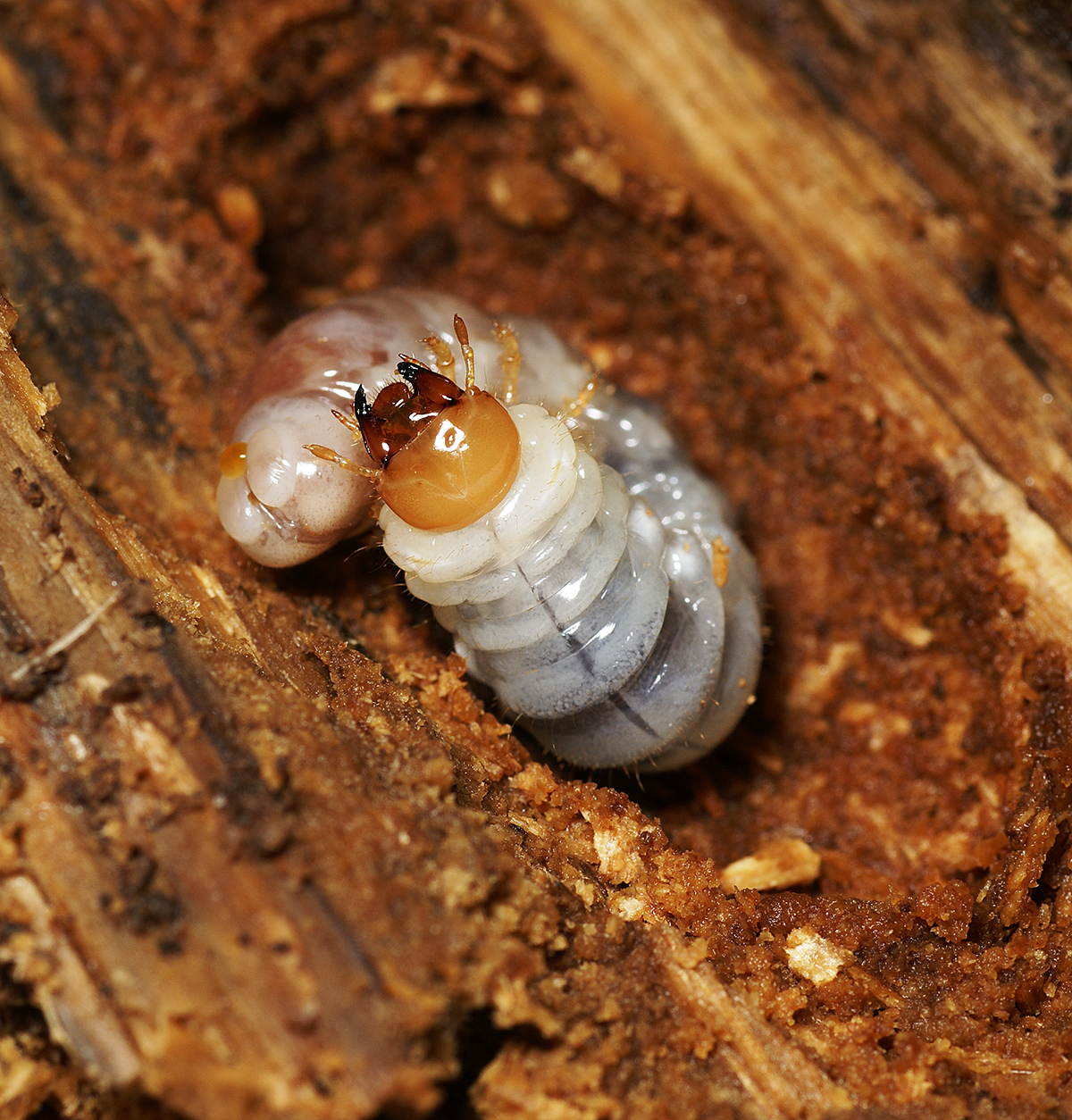General
requirements
Temperature: 18-26C; 23-25C day and night is optimal
Humidity:
high for both larvae and adult beetles. Less
humid for pupae.
Light: 12-14
hour day light/daylight bulb for adults.
Breeding tips on my Youtube channel
https://www.youtube.com/c/beetlesaspets
Larvae
Larvae of
giant flower beetles (Cetoniidae) require for their development rich organic wood derived substrates such as mulched well-decayed
leaves (normally from hardwood trees such as oak or beech) which could be mixed with some mulched soft rotten wood from the same trees. They also grow well on just mulched soft rotten wood or artificially rotten hardwood sawdust (flake soil). No conifers can be used, as they are toxic for the larvae. Part
of the substrate needs to be replaced regularly once the most of it is consumed. Larvae of the similar size can be kept together, however, some breeders recommend to keep them
separately, suggesting the possibility of the cannibalism. However, in my experience I have never observed any cannibalism in similar size Mecynorrhina torquata immaculicollis/ugandensis larvae which were kept in groups. However, make sure that the larvae are not to crowded, because they may bite each other accidentally. Larvae need to be
kept in a closed plastic container, with air access holes in its
top or upper part of the box sides. Normally a ~1.5-2 liter container is needed for one L3 stage giant flower beetle larva. To improve larvae's growth many hobbyists use protein rich supplement (e.g. dog or fish food pellets). As an example 1 pellet of Bakers Meaty Meals (1 kg box from
supermarket will last for generations of beetles) is placed at the
bottom of the container per one L3 larva per week.
If pellet is left uneaten then the food
supplementing can be skipped. Well developed larvae should normally reach 30-40g in weight before they get into the a pupation stage. It is always useful to
weigh larvae every couple weeks to ensure that they're putting on weight. Inexpensive jewelry watches, which can be bought cheaply on eBay, are great for this
purpose. During pupa period (6-7 weeks) the larvae
should not be disturbed as pupa may die inside pupal chambers or it may lead to
the deformed imago which normally will die shortly afterwards. Both pupae and freshly molted adults are very sensitive to mechanical stress. It takes
several days for larvae to construct pupal chamber out of substrate. With some
care fully formed pupal cell can be gently removed and transferred into another container.
Adults
After pupae turn into adults the beetles stay inactive in their cells for 3-5 weeks. The beetles should not be disturbed first week, when their exoskeleton is hardening during this time. While dormant, the beetles do not require any food as I understand that they still finish their development. After they become active (start moving actively in search of food) they can be fed on any sweet ripe fruits. Ripe banana is recommended, as it contains a significant amount of proteins. Commercially available beetle jelly is considered as a very good food for these beetles due its high protein content and because of it’s long shelf life and resistance to moulding. A simple version of the home made beetle jelly can be found here (http://beetlesaspets.blogspot.com/2013/11/jelly-for-tropical-beetles-at-home.html). Breeding container is normally a plastic box (20-30l) with about 15-20 cm of top soil at the bottom mixed with about 5-10% of rotten leaves and mulched decayed wood. Healthy males are very active and normally will chase females even underground. Mated female will lay eggs into soil. You can start checking for eggs after about/ every 3-4 weeks. After female died soil needs to be carefully inspected and all larvae and eggs transferred into the larvae rearing boxes. Food needs to be present in the container all the time as it normally results in more eggs laid by beetle females.
Monitoring the development of a larva with a jewelry scales. Mid L3 larva of Mecynorrhina torquata ugandensis.

Pupal cells of Mecynorrhina torquata ugandensis. One opened cell at the bottom has imago beetle which can be seen through the whole.

Please visit my youtube channel, it has plenty tips about raising giant fruit beetles.
https://www.youtube.com/c/beetlesaspets
You can also contact me via beetlesaspets@gmail.com
regarding availability of these beetles for sale or exchange.





